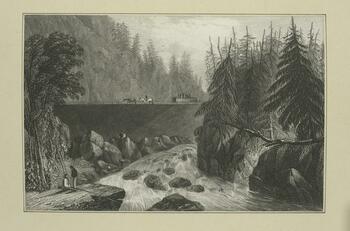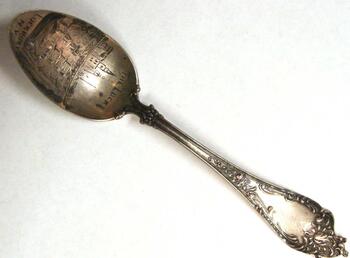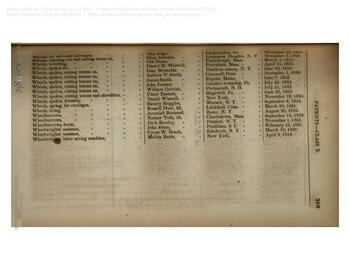The Erie Canal was designed to avoid natural bodies of water, creating instead a series of ditches connected by stone locks and aqueducts to carry boats across rivers. These choices also allowed for a considerably longer navigation season most years. Maintaining appropriate water levels in the 363-mile man-made canal was of paramount importance. Too much water would threaten the stability of the banks, and too little would impact the amount of cargo the canal boats could transport. The intricate balance and operation of locks, culverts, aqueducts, stop gates, and waste weirs were critical to the success of the Erie Canal.
Approximately three thousand individuals worked on the Erie Canal at any one time. The work was crude and hard with most men digging the four-foot-deep and forty-foot-wide ditch with only shovels and pickaxes. Until the advent of “Brainard’s barrow,” known today as a wheelbarrow, dirt was hauled away on small rectangular carts that were awkward and inefficient. Before the stump puller, plow, and scraper were introduced, clearing the densely forested areas was arduous and slow. With the stump puller, for example, the rate of tree stump removal jumped from four per day to forty per day.
In 1794 the Western Inland Lock Navigation Company established a rudimentary canal at Little Falls in order to overcome the treacherous geography prohibiting boat travel. Courtesy of The New York Public Library.
The “Flight of Five” locks that allowed boats to ascend or descend the sixty-foot Niagara Escarpment became a popular tourist attraction and technological marvel. This spoon commemorates the “Flight of Five” locks. Courtesy of Niagara County Historical Society via Western New York Library Resources Council and Empire State Digital Network.
Jeremiah Brainard’s Wheelbarrow patent of August 26, 1819, in Rome, New York, collected in A Digest of Patents. Brainard's patent for the refined design of the wheelbarrow allowed canal labor to deal more efficiently with the removal of the mud and muck from the canal ditch. Courtesy of University of Michigan via HathiTrust.


